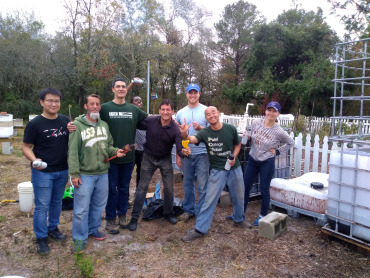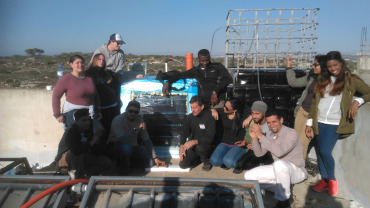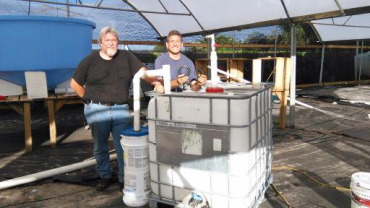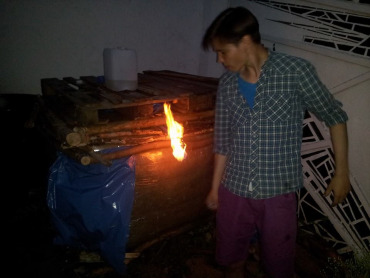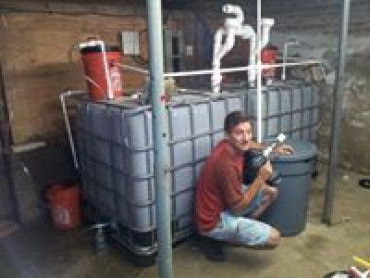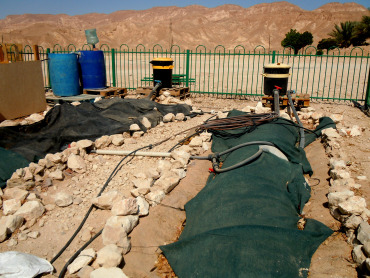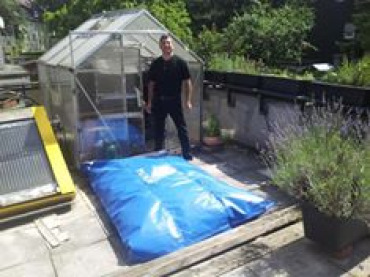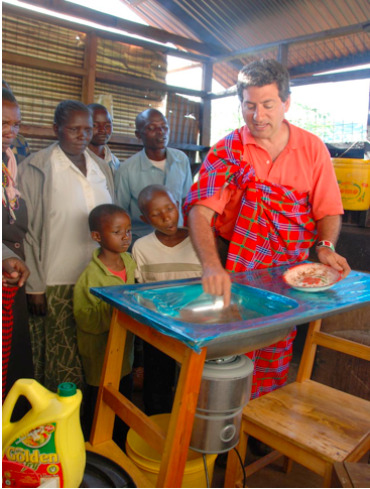Projects
His Excellency President Oluwasegun Obasanjo graciously invited us to his home to build a biodigester and then brought us around Abeokuta to see his Presidential library and his farms and industrial operations and plantations and reforestation areas and to attend church services and give presentations at the local churches on the miracle and blessing of biogas as a way toward ending deforestation, one of his passions.
Culhane met the leaders of the Catholic Development Agency Dobra Novina (http://www.dobranovina.sk/) in the Mukuru Slum in Nairobi when we were building our digester for the MAC school. In September of 2011 they invited him to give a workshop at their retreat in Zazriva. One of the highlights was the initiation ritural when we were filling the digester tank with manure -- the girls on the team, after a talk about microbiome theory and the idea that God speaks to us trough his Creation, plunged their hands in the cow manure
[[{"fid":"559","view_mode":"content_medium","fields":{"format":"content_medium","field_file_image_alt_text[und][0][value]":"","field_file_image_title_text[und][0][value]":"Culhane directs the placement of an ARTI style plastic water tank gas holder over the microbe motels in the insulated digester made from two concrete sewer pipes, a first of its kind we believe!"},"type":"media","link_text":null,"attributes":{"title":"pm71_biogas.jpg","class":"colorbox media-element file-content-medium"}}]]
Read more here:
At the annual National Geographic Explorer's Symposium in June of 2011, upon his return from a renewable energy surveying expedition to Nepal, Culhane demonstrated his solution to the aluminum can waste problem plaguing remote parts of the Himalayas where trekkers leave garbage that is too expensive to remove for recycling. The solution: turn them into powder while creating hydrogen and useful electricity.
As a result of our Slovakia workshop, we held a biogas building workshop in Budapest, where I demonstrated the Solar CITIES IBC system for colder climates and enjoyed the crowd sourcing, collective intelligence nature of the participants, who came up with many great ideas for improvements!

Working in partnership with the German "development through the arts" association, Simama e.V., a Solar CITIES enhanced ARTI digester was built at the Mukuru Arts Academy in Mukuru Slum, Nairobi by Minke Noordam and Nils Andersch from Simama and Mac teachers Henry Okayao and David Redmond in 2010.
As part of the Blackstone Ranch/National Geographic Innovation Challenge Grant, Culhane returned to Kenya and built digesters at the school of fellow Nat Geo Emerging Explorer Kakenya Ntaiya.
Solar CITIES has been working in Kenya since 2010 in several locations: The Mukuru Art Center (MAC) school in Mukuru Slum Nairobi, in Ol Donyo Waas Nature Preserve between Nairobi and Mombasa and in the Maasai Mara village of Enoosaen at Kakenya's Dream School for Girls. In 2011 we experimented with biodigester's and Insinkerator's in Enosaen.
February 3 through 5 of 2011 the Arava Institue for Environmental Studies held its Alumni conference in Aqaba Jordan. T.H.
Yube Boitumelo Siyangaphi, Joseph Kabimba and Kebonyemang Mashabe and I have built a three stage biodigestor at the worker's camp at CSU base camp, Selinda wildlife reserve, Botswana. It consists of a fiberglass-sealed 1000 liter horizontal digestor tank (primary digestor), a 200 liter used steel oil drum with a telescoping gas collector made from a second oil drum, chopped in two (with 5 cm cut out all around) and then brazed (torch welded) back together so it fits inside the first drum (5 leaks had to be patched with metal expoxy).
The Selinda system was sized to accommodate the kitchen waste from a maximum of 16 guests eating 4 meals a day. Culhane spent two days during a period of full occupancy grinding the waste generated through meal preparation and plate scrapings through the Insinkerator LC50 generously donated by Emerson Electronics and determined that each meal (breakfast, lunch, tea and dinner) generated approximately 2 25 liter buckets of slurry (food waste ground up with water).
As part of the Blackstone Ranch/National Geographic Innovation Challenge Grant he received, T.H.












